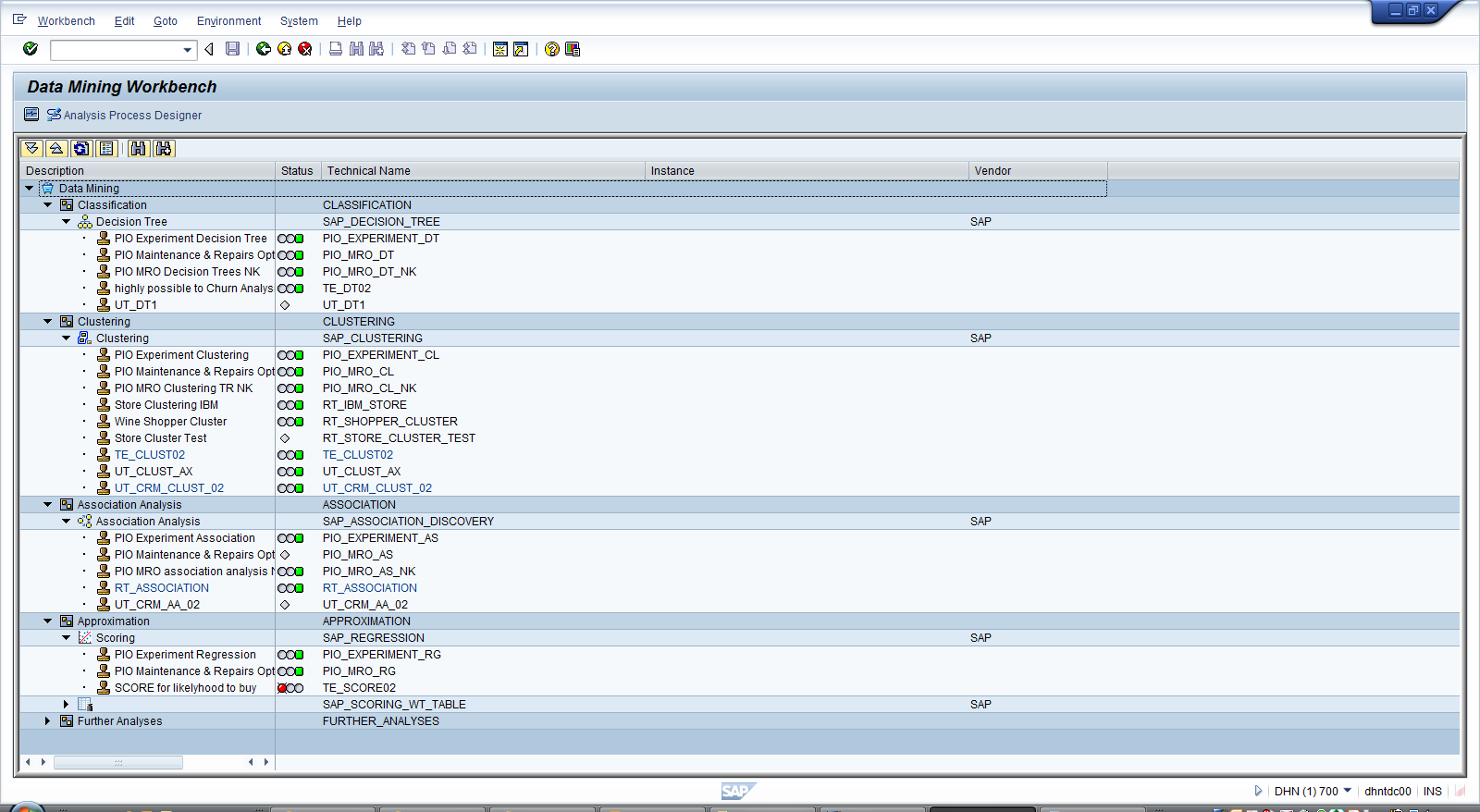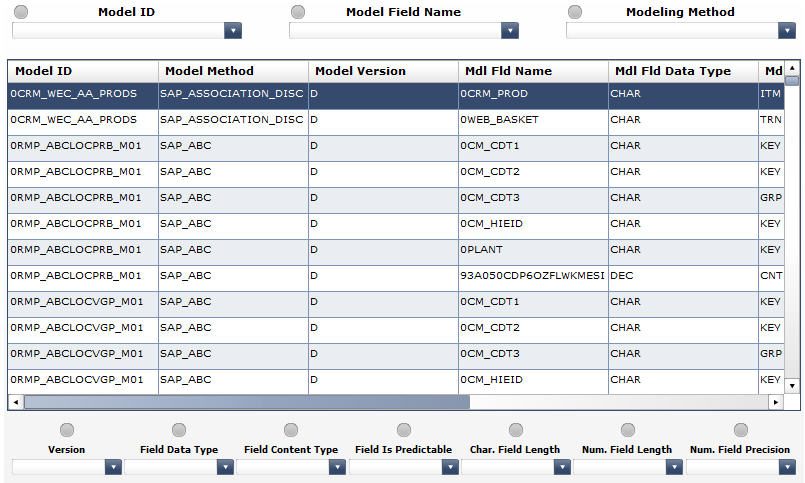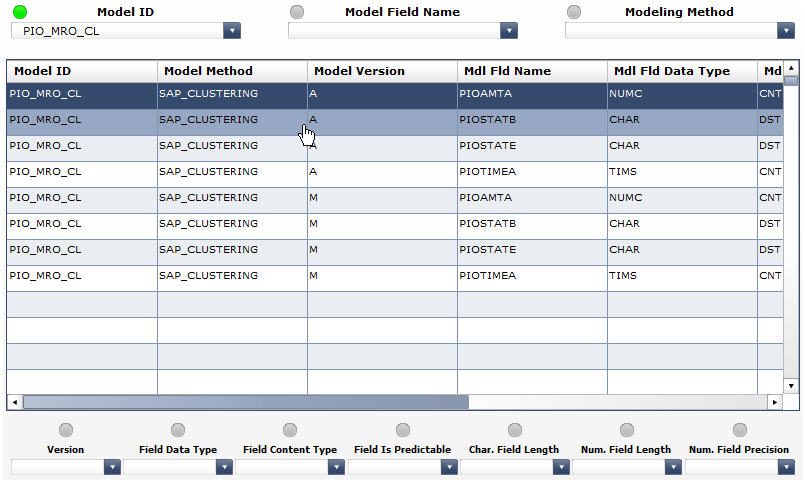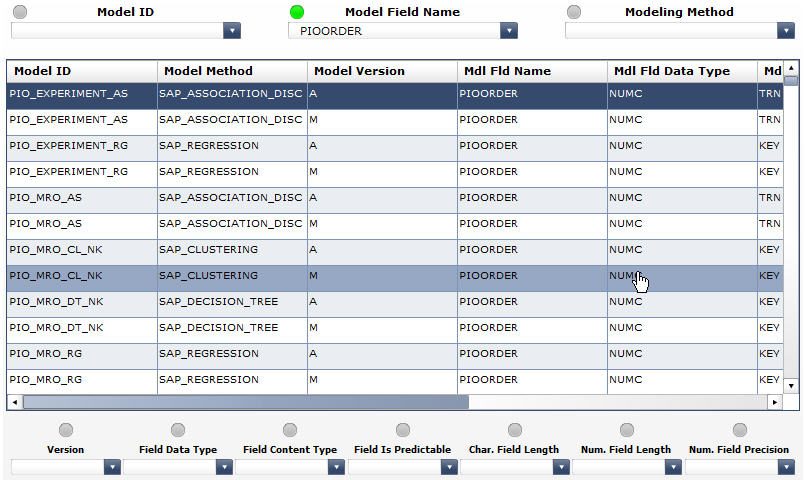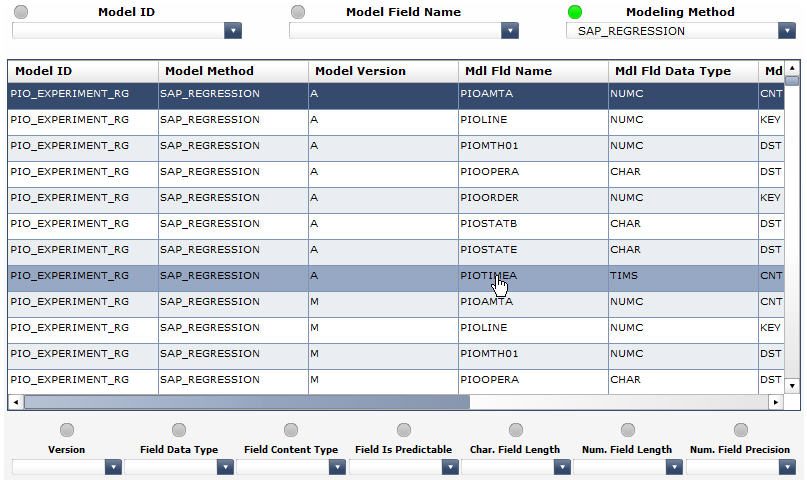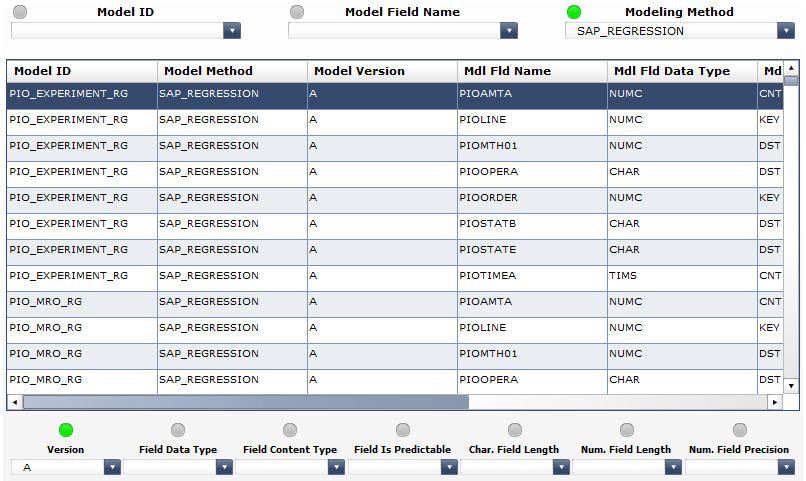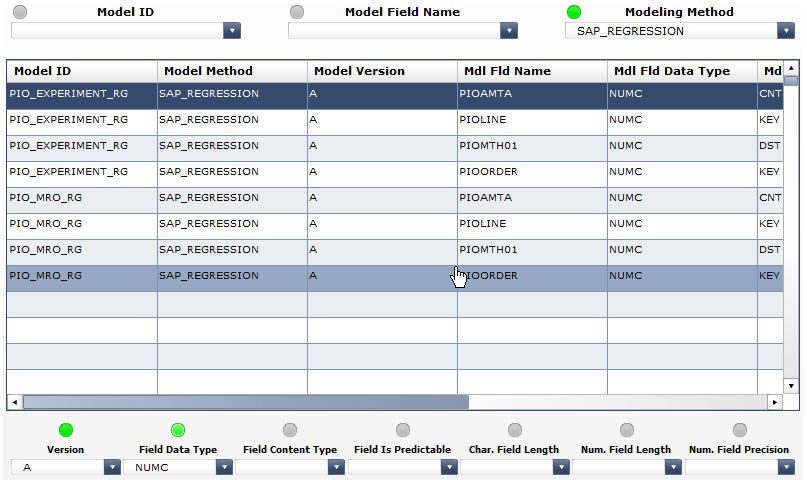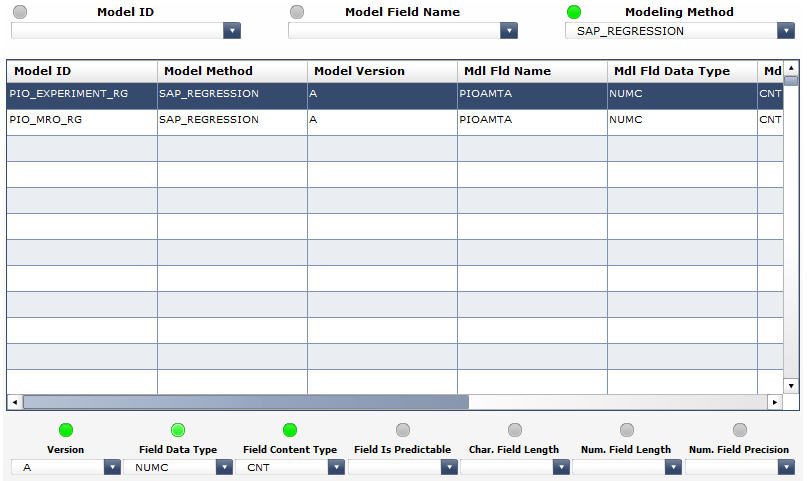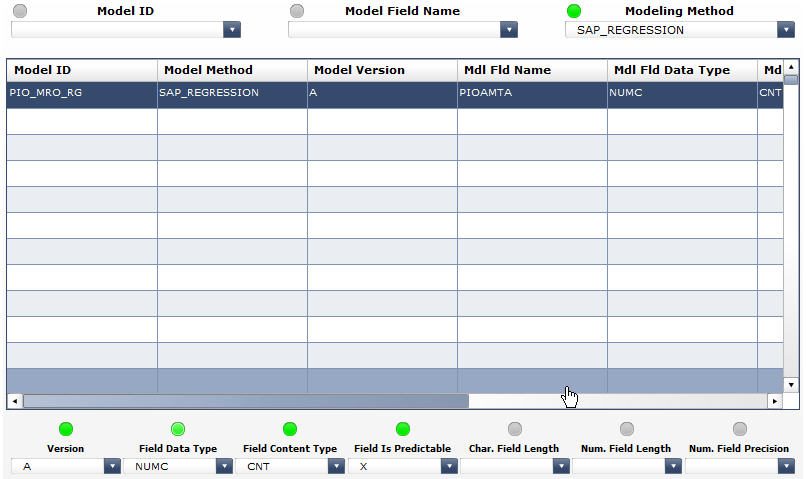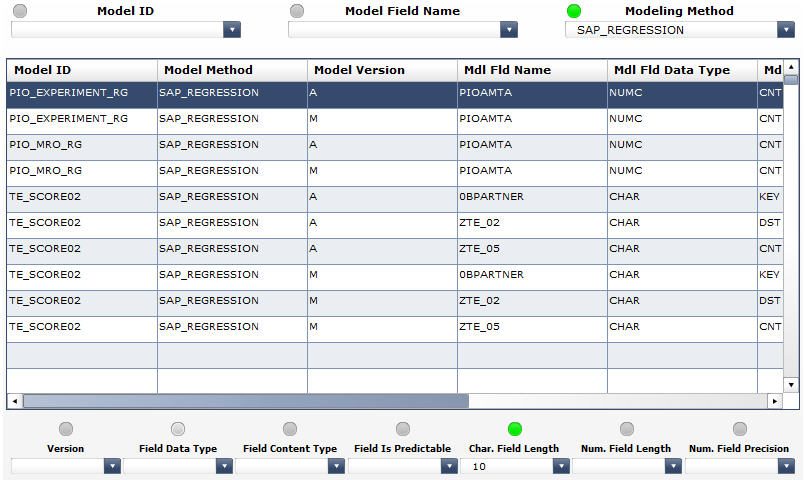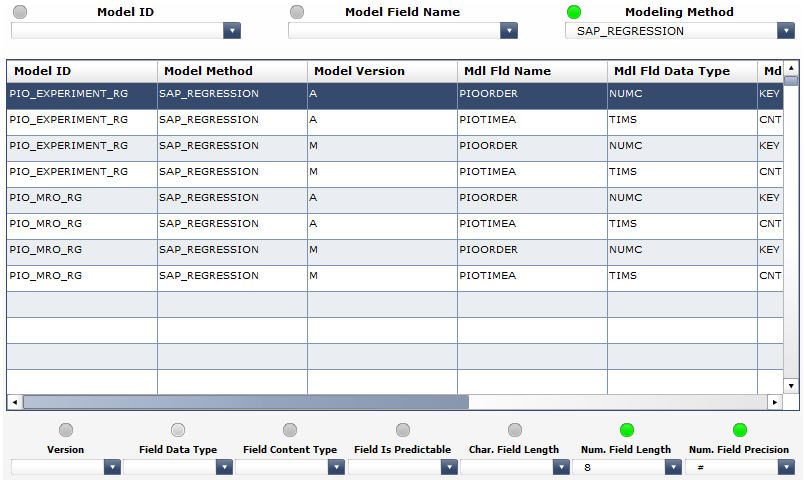SAP BW Data Mining allows creating data mining models that implement respective analysis methods (either supplied by SAP as built-in with SAP BW Data Mining or supplied by certified vendors). Although analysis methods available via SAP BW Data Mining provide extensive reporting and visualizations, there could be a need for additional model- and method-related analytics that would facilitate management and deployment of the content created with SAP BW Data Mining. In this paper we will present the following analytics:
- Dashboard – SAP BW Data Mining Model Reporting
Business Requirements
The main use of SAP BW Data Mining is creation of models based on analysis methods and of analysis processes based on the models. Together, models and analysis processes are the content that is built using SAP BW Data Mining. If SAP BW Data Mining is used actively in a company, the growing volume of the content that is built may lead to a necessity to have additional means for reporting on that content.
If we take look at what currently is available for reporting on the model content in SAP BW Data Mining, we will see that the only available means of reporting is the model management transaction RSDMWB:
While very visual and providing a structured view of the model content, as well as generic search functions, there is a number of business requirements that could be formulated:
- Ability to browse specific models to visualize their most important details without clicking into those models and studying them via a Display/Edit mode
- Ability to visualize the models that contain a specific variable (field)
- Ability to visualize the models based on a specific analysis method (SAP_ABC, SAP_ASSOCIATION_DISCOVERY, SAP_CLUSTERING, SAP_DECISION_TREE, SAP_REGRESSION, SAP_SCORING_WT_TABLE, etc.)
- Ability to visualize the models of a specific version (A, M or D)
- Ability to visualize the models with fields of a specific data type (CHAR, CURR, DEC, FLTP, INT4, NUMC, QUAN, TIMS, etc.)
- Ability to visualize the models with fields of a specific content type (CNT, DST, GRP, ITM, KEY, TRN, etc.)
- Ability to visualize the models with predictable fields
- Ability to visualize the models with character fields of a specific length
- Ability to visualize the models with numeric fields of a specific length
- Ability to visualize the models with numeric fields of a specific precision
Analytics
To implement the above business requirements, the SAP BW Data Mining Model Reporting dashboard has been developed. The dashboards underlying BEx query takes the data extracted from the SAP BW Data Minings tables that store the information about models.
Once started, the dashboard returns a list of models currently available in our specific SAP BW Data Mining instance (see below screenshot). The following columns have been enabled in that list:
- Model ID a unique identifier, the technical name of the model
- Model Field Name an identifier of a variable (field) of the model
- Modeling Method the modeling method on which the model is based
- Version the version of the model
- Field Data Type the type of the data contained in a model field
- Field Content Type the role that a model field plays in the model
- Field Is Predictable contains X if the field is a predictable field, i.e. the one that if filled with prediction results
- Character Field Length the total length of a character field
- Numeric Field Length the total length of a numeric field
- Numeric Field Precision the number of digits after the decimal point in a numeric field
The selectors of the dashboards correspond to the columns of the list and allow limiting the models visualized via the list to specific criteria. Each time a specific value is selected, the respective selectors status indicator turns green.
In the below screenshot, the PIO_MRO_CL value is selected via the Model ID selector. The list of models is immediately refreshed to display only the records corresponding to the model with the technical name PIO_MRO_CL:
If we wanted to obtain the list of models that contain a specific field, we would use the Model Field Name selector. In the below screenshot, the PIOORDER value is chosen in the Model Field Name selector, and the list returns only the models that contain the field PIOORDER:
In a similar way, should we like to know which models are based on a specific analysis method, we would apply the Modeling Method selector: in the screenshot below, the SAP_REGRESSION method is chosen, leading to the model list narrowed down only to the models that are based on regression:
In order to further refine the selection, we will keep the SAP_REGRESSION method chosen in the Modeling Method selector, and will proceed with applying more criteria. In the below screenshot, it is shown that in the Version selector the value A is chosen, the resulting recordset displaying only the models based on regression and having version A:
To continue with the refining of the resulting recordset, we can select a specific data type in the Field Data Type selector. See the data type NUMC chosen in the below screenshot:
We can proceed with our refining by limiting the content type of the fields using the Field Content Type selector. This will leave us only with the regression models (having version A and NUMC fields) where the fields correspond to CNT content (see below content):
We will finalize our refining by requesting that the recordset is further limited to the models with predictable fields this will be achieved by indicating the value X in the Field Is Predictable selector (see below screenshot):
As a result of our refining, we have ended up with only one record that meets all of the above criteria. We will clear the selections made before in the Version, Field Data Type, Field Content Type and Field Is Predictable selectors and will demonstrate the other selections focused on the sizes of the fields of specific types. For example, we may wish to show the regression models that contain character fields with the maximum length of 10 characters. In order to do this, we will apply the Char. Field Length selector (see below):
Let us remove the previous selection in the Char. Field Length selector (while still keeping the SAP_REGRESSION method selected) and visualize only the models that have numeric fields with maximum of 8 digits before and 0 digits after the decimal point (see below):
Typical Use Cases
The following could be examples of the typical use cases in which the usage of the SAP BW Data Mining Model Reporting dashboard could bring benefits:
1) A company maintains a diversified library of models, and it faces the necessity (e.g., due to the changes in the configuration of the source systems) to replace the field A in all the models that contain it with the field B. It is known that the field A can be contained by models based on any method, and the field A can be used in the models in combination with a very broad list of other fields (i.e. there is no steady association with one or a set of other fields).
Use scenario: select the records that correspond to the models containing the field A using the Model Field Name selector.
2) A data mining specialist receives an inquiry from one of the operations departments regarding the existing implemented data mining content that could help running prediction on variables expressed in terms of monetary amounts.
Use scenario: select the records with version A using the Version selector, then apply CURR selection in the Field Data Type selector, and then choose X in the Field Is Predictable selector.
3) A data mining specialist would like to find out the analysis methods, based on which there have been created the models that contain NUMC fields to represent continuous variables.
Use scenario: select the records with NUMC data type using the Field Data Type selector, then apply the CNT selection using the Field Content Type selector, and then open the dropdown list in the Modeling Method selector the dropdown list will be showing the methods that are involved in the models satisfying to the abovementioned criteria.



